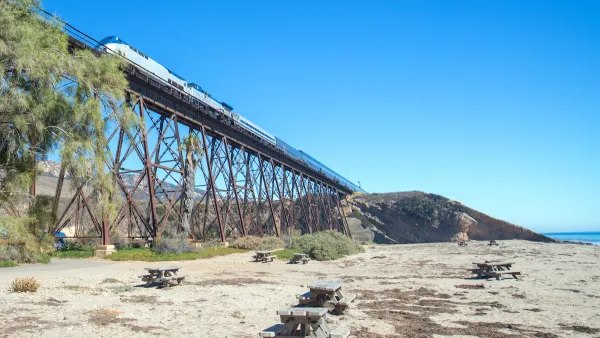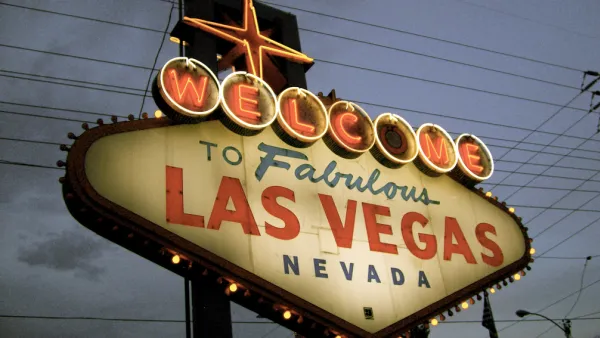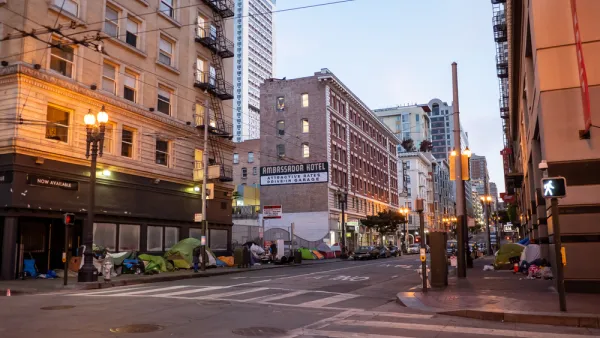California voters will soon vote on a $10 billion bond proposal that would fund a 220 mph bullet train running between L.A. and San Francisco.
"If Californians approve the $10 billion bond proposal – enough to provide initial financing for the $42 billion system that could link north and south through the agricultural Central Valley –they will likely see the zooming trains in about a decade."
"The price tag may sound ominous in shaky financial times. But the project could turn out to be half the cost of alternatives, proponents say. They calculate that the additional 13.5 million people expected to reside in California within 20 years will result in 90 million to 115 million more intercity or region-to-region trips. Supporting the travelers would require at least $82 billion in upgrades, including 2,970 additional miles of freeway lanes, 90 new airport gates, and five new runways."
"Previous statewide votes on the train were readied, then taken off ballots in 2004 and 2006. In 2004, the reason was a large state deficit that required a bailout bond measure, and in 2006, Gov. Arnold Schwarzenegger placed one of the state's largest infrastructure bond measures before voters. He and other state legislators did not want any romantic notions of speeding bullet trains competing for voters' attention."
"This year, the state has a budget deficit of $16 billion, which could dampen enthusiasm for the train, but the California High-Speed Rail Authority, the proposal sponsor, has secured promises of federal matching funds and funding from public/private partnerships, and a 30-40 percent profit margin."
FULL STORY: Bullet train coming to California ballots

National Parks Layoffs Will Cause Communities to Lose Billions
Thousands of essential park workers were laid off this week, just before the busy spring break season.

Retro-silient?: America’s First “Eco-burb,” The Woodlands Turns 50
A master-planned community north of Houston offers lessons on green infrastructure and resilient design, but falls short of its founder’s lofty affordability and walkability goals.

Delivering for America Plan Will Downgrade Mail Service in at Least 49.5 Percent of Zip Codes
Republican and Democrat lawmakers criticize the plan for its disproportionate negative impact on rural communities.

Test News Post 1
This is a summary

Test News Headline 46
Test for the image on the front page.

Balancing Bombs and Butterflies: How the National Guard Protects a Rare Species
The National Guard at Fort Indiantown Gap uses GIS technology and land management strategies to balance military training with conservation efforts, ensuring the survival of the rare eastern regal fritillary butterfly.
Urban Design for Planners 1: Software Tools
This six-course series explores essential urban design concepts using open source software and equips planners with the tools they need to participate fully in the urban design process.
Planning for Universal Design
Learn the tools for implementing Universal Design in planning regulations.
EMC Planning Group, Inc.
Planetizen
Planetizen
Mpact (formerly Rail~Volution)
Great Falls Development Authority, Inc.
HUDs Office of Policy Development and Research
NYU Wagner Graduate School of Public Service





























